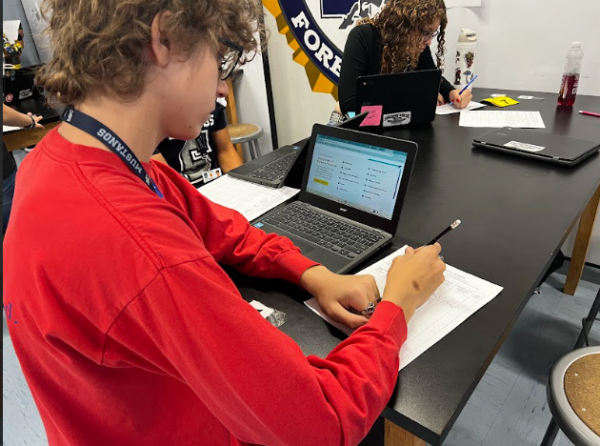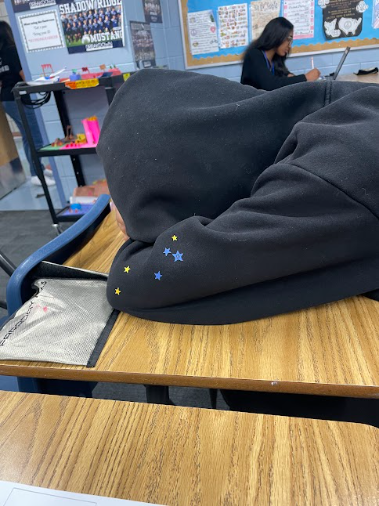When students have five tests in a week, rather than cramming at the last minute, a few helpful tips for studying are planning ahead and not rushing. Understanding when students have a test coming would help a lot with time management. On the official Harvard website “Top 10 Tips to Study Like a Hardvard Student” their main and first tip is to not cram because this shows they aren’t truly learning the material. Students are just trying to do their best to understand this information until the test is over.
Allison Wilson, a teacher at Shadow Ridge High School states, “I’ll be honest, I was never a hardcore study person, most of the time I just kind of winged it. But what actually works is keeping it simple and breaking things into smaller chunks. Do like 20–30 minutes, then give yourself a quick break so it doesn’t feel impossible. Rewriting notes in your own words or explaining it out loud really helps it stick, and if you can teach it back, you know you actually get it.”

Taking breaks is important and this can really help students keep motivation so the work doesn’t pile up to feel like too much.
A study done by the National Institutes of Health in 2021 that supports this method of studying which is formally known as the “Pomodoro Technique” where short focus work sessions are followed by brief breaks which have been shown to increase focus, energy, and improve learning retention.
However, a good source is Blooket to help students study. Blooket is an amazing free online source where people can make flash cards, fun games, or even practice tests based on information they need to know. Blooket also grades students based on how many questions the player gets wrong or right. People who make Blookets tend to publish them for others to freely use so they have Blookets for just about every class from English 9 to English 101 . This works as a fun, more accurate, way to test knowledge of the subject students are trying to learn.
The last and most important piece of advice people should be left with is that everyone studies differently and different things work for different people.
Wilson states, “Everyone’s different, so don’t force yourself into one method just because someone else swears by it — some people need quiet, some like music, some color-code. The main thing is to start earlier instead of cramming the night before, because little bits over time stick way better.”
As Wilson said people shouldn’t corner themselves into one box, sometimes certain things just may not work for that person.
Tyeish Mead, a 11th grade student at Shadow Ridge High School states, “I prioritize my work in the best order that helps me. I make up songs and sayings that help me remember and understand, and I repeat sayings in my head while doing everyday tasks.”
Mead has a good point: Studies show that reviewing information at increasing intervals, rather than cramming, improves recall accuracy and long-term memory. The Ebbinghaus Forgetting Curve illustrates how quickly people forget material learned, but spaced repetition leverages this by having students review information just before they’re likely to forget it, thus strengthening neural connections and making the memory more durable.









